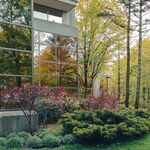drum118
Superstar
The approved EA by TTC Commissioners and City Council "DID" included an LRT on the Lake Shore Blvd E.
When the Province came back to TTC to break the EA down into 3 separate areas, TTC Staff removed the Lake Shore LRT out of the EA Master Plan unknown to everyone involved with the EA including Me.
It was only when we started the EA for Cherry St did we find out about the removal of the line as well the opposition by TTC to have a line on Lake Shore.
When the Province came back to TTC to break the EA down into 3 separate areas, TTC Staff removed the Lake Shore LRT out of the EA Master Plan unknown to everyone involved with the EA including Me.
It was only when we started the EA for Cherry St did we find out about the removal of the line as well the opposition by TTC to have a line on Lake Shore.
Last edited by a moderator:








